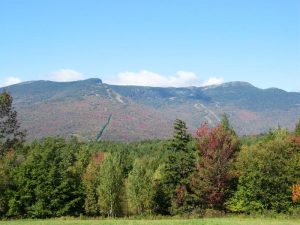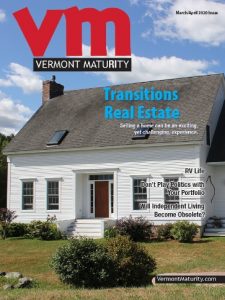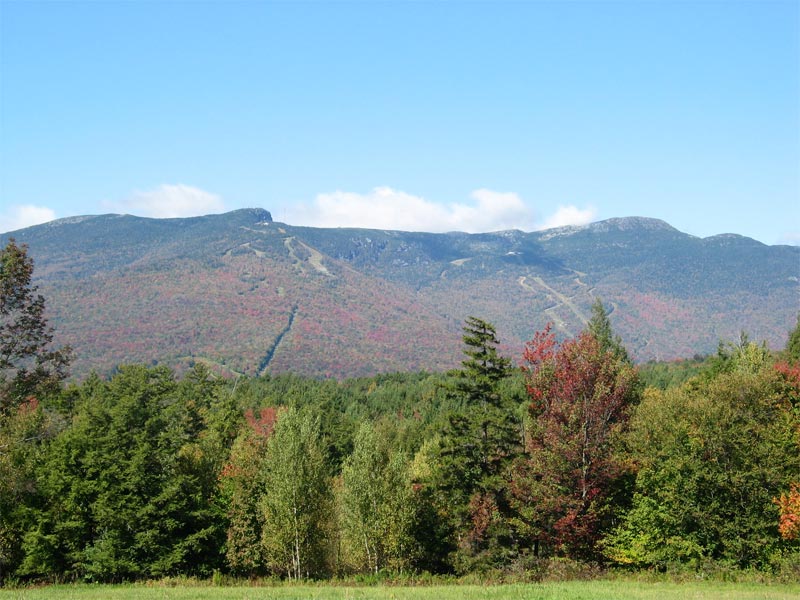
We all have our favorite places in Vermont. Mine is the top of Mount Mansfield, with its vast granite shoulders and vistas stretching as far as the eye can see. My wife’s is a place of memory, her family’s rustic camp in the hills of North Fayston when she was growing up.
We’ve been fortunate enough to spend a good portion of our lives in Vermont. I come from Chittenden County, Marge from Bennington. Separately or together, we’ve seen much of this beautiful state. But three years ago we embarked on a quest to see it all.
As it turns out, there are 251 cities and towns in Vermont, ranging in population from , Burlington to tiny Glastenbury with only a handful of residents and Lewis with none at all. Within those 251 cities and towns are countless villages and crossroads communities, each with its individual character, history and flavor.
What got us started on a more focused exploration was The 251 Club. Its goal is its name. Members seek to visit each of the 251 geographical units that make up the Green Mountain State. The objective is to not just drive through but spend enough time to capture the essence of each place. Club secretary William Rockford Jr. of Montpelier said there are around 3,600 current members, of whom 450 have completed the journey. While most live in Vermont, club members come from 36 states and as far away as Ireland and Australia. Eighty percent are retirees.
Vermont is laid out in a series of squares dating back to the mid-1700s, when New Hampshire’s provincial governor Benning Wentworth issued land grants for the undeveloped and disputed territory between New Hampshire and New York. You can see the present-day reminder of this on the welcome signs greeting you as you travel from town to town. Most say chartered or established or settled on such and such a date, the most common year appearing to be 1761. Bennington , named for its benefactor, is the earliest at 1749.
While there’s some variation in the shape and size of the towns, most are approximately six miles square. They’re laid out in a grid pattern with little regard for topographical features except for the uneven shores of Lake Champlain on the west and the Connecticut River on the east. Of course, Vermont is not a square sort of place with its mountains, valleys, rivers and lakes that existed long before Governor Wentworth drew his lines on a map. So the different towns take their character from what happens to fall within those arbitrary borders. And that’s what makes the 251 Club so much fun.
How you go about the quest depends on your particular interests. Bill Rockford tells of one couple who managed to canoe in all 251 communities. It took some ingenuity, because believe it or not there are a few towns in Vermont with no natural waterways. The paddlers solved the problem by locating farm ponds large enough to launch their canoe and keep the record intact.
My own enjoyment is photography. My goal is to come away from each town with at least three or four good photos that define unique features of the place. Since I’m creating a digital album, the first picture in each series is a roadside welcome sign or the name on a building that identifies the town.
My wife and I are also interested in Vermont historical sites and museums, so we try to include those in our travels. Many communities have historical societies that collect and display artifacts and memorabilia. Old cemeteries and town halls are not only visually interesting but can offer genealogical tidbits for those researching family roots.
Our home in Sudbury is on the northern border of Rutland County. We set out from there on our initial ventures, south to the towns around Rutland and Fair Haven, north toward Middlebury and Vergennes. Since we were fairly familiar with local landmarks and points of interest, the first few towns went quickly. But as our circle widened, we found more and more surprises.
One early spring day we discovered the tiny picture-postcard village of North Shrewsbury. The former general store, W. E. Pierce Groceries, was being restored by the Vermont Preservation Trust in the hope someone could be found to reopen it as a center of community life. We were transported back to the days before paved roads and easy travel changed the way we shopped and worked.
On another occasion we booked a bed and breakfast in Chester and explored parts of Windsor County. Chester is a jewel in its own right with its handsome stone houses along Route 103 and its Victorian railroad depot. To the east, Springfield offers reminders of its former glory as the center of Vermont’s machine tool industry, its once thriving factories lining the Black River. Just north of Chester and Springfield, we found the small triangular town of Baltimore which we never knew existed. We wandered its dirt roads looking for an identifiable landmark and finally encountered a tiny white-frame town office building. By contrast, the town of Weston a few miles away is one of Vermont’s premier tourist destinations and a photographer’s dream with its historic gristmill and the famed Weston Playhouse and Vermont Country Store flanking the village green.
The amazing thing about Vermont and the rewarding satisfaction of the 251 Club is that you will find similar surprises in every corner of the state, from the Northeast Kingdom to the Champlain Islands to the Mettawee Valley of Pawlet and Dorset. The fact is, we live in a beautiful, interesting state, and discovering its hidden treasures has never been so easy.
The 251 Club costs very little to join. Bill Rockford sends you a checklist of the cities and towns and a map showing where they are. You go at your own pace and when you’ve hit them all, you let Rockford know and your name appears in the next club newsletter. It’s as simple as that. If you’re so inclined, you can share your experiences with other questers at a pair of dinner meetings held each year in various parts of the state.
Spence Gregory is a former television news producer and Vermont retailer.
 Related Articles & Free Subscription
Related Articles & Free Subscription
Skiing in Vermont: Big Ideas and Quirky Characters
The Vermont Republic – The Story of When Vermont was an Independent Country








Comment here